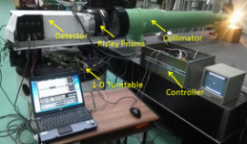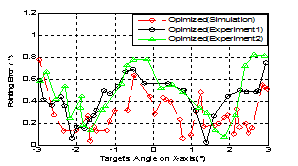Progress of the Beam Control with Risley Prisms
The Risley prisms can realize large-range and precise deflection control of beams with compact structure, fast response and good environmental adaptability. The challenge is achieving high accuracy and large dynamic range simultaneously. Many research institutions have tried to solve the problem around the world. In Next Generation Satellite Laser Ranging (NGSLR), NASA used Risley prisms as forward pointing devices to realize high-accuracy forward aiming angles, achieving the pointing accuracy of 1.5″at the angular range of several decades arc-second ; in the UAVs and other small aircrafts, Ball Aerospace & Technologies Corp. adopted Risley prisms to obtain deflection angle of 70° in infrared detecting and pointing equipment, which accuracy is better than 200 " and deflection angular dynamic range is 34dB.
Through the physical model recognition with enhanced generalized capability and the iterative vector optics optimization techniques, the team of Ren Ge and Chen Ke from Key Laboratory of Light Beam Control, Institute of Optics and Electronics, CAS, addressed the challenge of strong coupling, nonlinearity and multi-solution of the Risley prisms beam deflection in theory, dealt with the effects due to processing, installation and measurement errors in engineering application, and made breakthrough in deflection accuracy and angular dynamic range of the Risley prisms to achieve large-angle, high-precision beam pointing specifications as follows: The maximum pointing error is less than 1 arc-sec within the maximum deflection angle range of 3 ° and the angular dynamic range is greater than 43dB, which are better than the highest level reported in the current literature.
The research results were published in Applied Optics and have authorized a number of national patents for inventions by State Intellectual Property office of The P.R.C. The technology has a wide range of applications in space laser communications, target tracking and so on. The research work was supported by CAS Key Laboratory Fund, CAS "Light of West China" Program and other projects.


Fig.1:The structure including the Risley prisms. Fig.2: The curve of measured data.
(Li JInYing)
Contact
CAO Qiang
Institute of Optics and Electronics
Email: caoqiang@ioe.ac.cn
